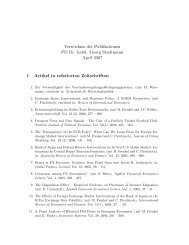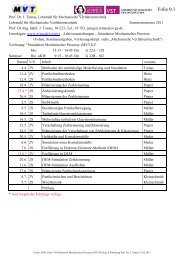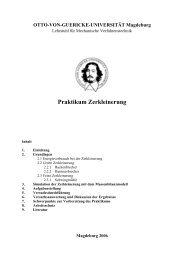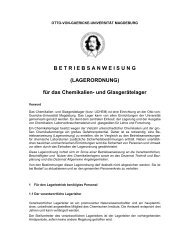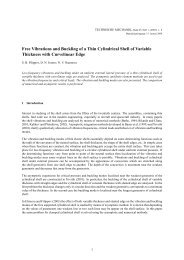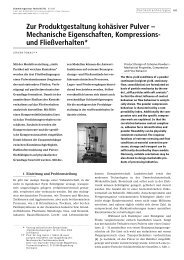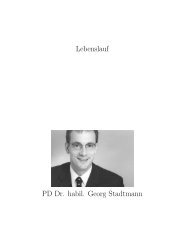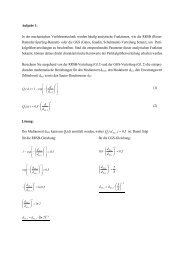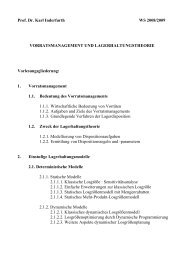Mechanics of nanoparticle adhesion â A continuum approach
Mechanics of nanoparticle adhesion â A continuum approach
Mechanics of nanoparticle adhesion â A continuum approach
You also want an ePaper? Increase the reach of your titles
YUMPU automatically turns print PDFs into web optimized ePapers that Google loves.
<strong>Mechanics</strong> <strong>of</strong> <strong>nanoparticle</strong> <strong>adhesion</strong> — A <strong>continuum</strong> <strong>approach</strong> 9and the median particle radius r 1,2 (characteristic radius <strong>of</strong> contact surface curvature)(Fig. 1),r12 , 1 1 –= +r1 r 2 and the average material stiffness (E, modulus <strong>of</strong> elasticity; ν, Poisson ratio)1(3)*E1−ν1= 2⋅ + E2 21−ν21E2one can calculate the correlation between normal force F N and maximum contactradius r K,el :3⋅r⋅F2⋅E3 12 , N=Kel , *rConsidering surface displacement out <strong>of</strong> the contact zone (for details, seeHuber [42]) the so-called particle center <strong>approach</strong> or height <strong>of</strong> overlap <strong>of</strong> bothparticles h K is [41]:2K K, el 12 ,−1(4)(5)h = r / r(6)Substitution <strong>of</strong> Eq. (6) in Eq. (5) results in a non-linear relation between elasticcontact force and deformation [41] (Fig. 1):2 * 3FN = ⋅E ⋅ r3 12 ,⋅ hK(7)Eq. (7) is shown as the dashed curve marked Hertz. The maximum pressure2p max , Eq. (2), is 1.5 times the average pressure FN/( π ⋅ rK , el)on the contact areaand lies below the micro-yield strength p f . Because <strong>of</strong> surface bending and, consequently,the opportunity for unconfined yield at the surface perimeter outside <strong>of</strong>the contact circle r K ≥ r K,el (Fig. 1b), a maximum tensile stress is found [42]σtmax , ≈− 015 . ⋅pmax(here negative because <strong>of</strong> positive pressures in powder mechanics):2t1−2⋅νrK2max3r ≥r rKel,σpKK,el=− ⋅ (8)This critical stress for cracking <strong>of</strong> a brittle particle material with low tensilestrength is smaller than the maximum shear stress τmax≈ 031 . ⋅ pmaxaccording toEq. (11) which is found at the top <strong>of</strong> a virtual stressing cone below the contact



